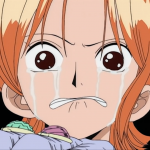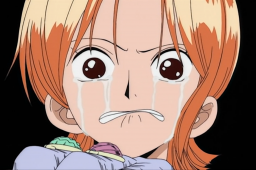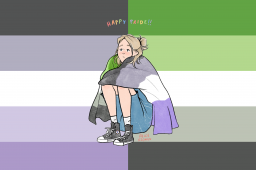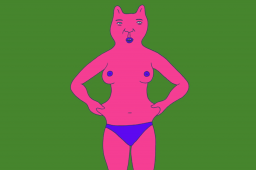
AKU NO HANA AND BAUDELAIRE’S MASTERPIECE
- July 07, 2020
- by
- Aadmin
That grief’s the sole nobility, I know it,
Where neither Earth nor Hell can make attacks,
And that, to deck my mystic crown of poet,
All times and universes paid their tax.
Because it will be only made of light,
Drawn from the hearth of the essential rays,
To which our mortal eyes, when burning bright,
Are but the tarnished mirrors that they glaze.
What does being immoral mean? What if the tendency to perversion, destruction and recklessness would be the most essential part of being human? Aku No Hana is an anime that deals with these questions in a very realistic and unique way. It got its title from Charles Baudelaire’s “The Flowers of Evil” which is a collection of poems and one of the most important works of modern poetry. It deals with topics like transcience, eroticism, art, sorrow and death and during the time it was published, it was highly criticized for its degenerated mrorals. Baudelaire even went to court, was fined and six of his poems in the collection were banned. Different aspects of the anime lead to an interesting representation of these themes. One of the most striking is porbably its art style and animation. Many people have been criticizing the way rotoscoping has been used within the series by stating that it looks strange, creepy and badly made. In my view, the look of the show is very suitable as it creates that exact eerie atmosphere that matches the plot. The world of Aku No Hana is not ssuposed to look nice. It is meant to be uncanny and ugly just like Baudelaire’s poetic descriptions.
The story is about Kasuga who is in love with a girl called Saeki. One day, he is overwhelmed by the urge to steal her gym bag with her clothes in it. Unfortunately, he has been observed by his class mate Nakamura while doing so. Nakamura uses his secret to pressure and manipulate him to do whatever she tells him to. She encourages him to embrace his dark side instead of refusing it. “The Flowers of Evil” is a justfied title for the series as it is not only a small reference but defines the whole story. Kasuga loves literature and reads authors like Tatsuhiko Shibusawa and André Breton who are both very well known for their works on surrealism. Kasuga’s favorite work of all time is the French collection of poems “The Flowers of Evil”. He says that the book changed his life and the view he perceived the world. Just imagine a kid coming up to you with a beautifully wrapped noble looking present and as you slowly open it, you suddenly discover a dead rat. Baudelaire is a representative of aestheticism. His verses are composed, well thought out, beautiful and stick to set traditional patterns. Contrary to their form, the content the poems depict is depressing and cruel, yet surreal and touching. Labelling herself and Kasuga a deviant and being pleased by someone she can identify herself with, Nakamura represents the lyrical speaker in many of Baudelaire’s poems. The very first poem of the collection “To the Reader deals” with Satan controlling human beings. It describes the process of us gradually walking towards hell. We do not notice being filled with death. It is emphasized that the worst and most nasty of all sorrows and the only thing capable of swallowing the whole world is boredom.
I speak of Boredom which with ready tears
dreams of hangings as it puffs its pipe
Reader, you know this squeamish monster well,
-
hypocrite reader, – my alias, my twin!
In the original French version it is described as “ennui” which does not only imply simple boredom but a state of complete dissatisfaction of the world how it is. A more suitable term would be world- weariness. It is not only not knowing what to do but being sick of everyone and everything. That perfectly describes what Nakamura feels. It is not wickedness but boredom that is the motive of her actions. She is sick of the routine, of everyone talking about the same things, of everyone sticking to the rules. In her view, people are hypocritical because they hide their inner self. In her words, tearing down walls is all she wants. Revealing the true ugly nature of human beings – immersing into the chaos that is controlling the world; but instead of seeing the people who surround her as allies who are in the same situation as her, she sees them as subordinated because in her opinion, they are limited in their perception and in their thinking. In contrast to her, at the beginning, Kasuga has not accepted who he is yet and finds himself in an emotional and moral dilemma. He loves Saeki but does not bear do be near her as his feelings of guilt are devastating. In his mind, Saeki is not human but an angel. His idealization of her has no relation to reality and leads to a growth of negative feelings towards himself. He feels unworthy and useless and literally refers to himself as a “piece of shit”: Kasuga is the only person Nakamura sees as interesting and therefore, he is her only hope to escape her crushing and desperate view of the world. This impression of absolute hopelessness and meaninglessness is also exemplified by the town they live in. It is grey, it seems cold and very quiet in an uneasy way. It seems like hell and that is the reason why later on, both of them try to escape the place to get to the other side which can be interpreted in different ways. On the one hand, it can be seen as a metaphor for their hopes and dreams of a better and more interesting life but on the other hand, it can also be viewed as their wish to discover the afterlife. Kasuga always asked himself who else in this town might understand him and Baudelaire. “The Flowers of Evil” is a perfect mirror of his emotional state.
Him rereading reciting the verses in his mind illustrates not only what an impact the book has on him but also that these verses show him his inner self. When Saeki expresses her wish to understand Kasugas thoughts and feelings, he is not able to open up. The fact that she is not able to grasp the concepts of the book confirms his belief. He is not able to connect to her because he still holds on to the belief that no one is able to understand or accept his wrong behaviour – no one excpet those who are as equally destructive and deviant – in this case, no on except Nakamura. Nakamura does not need to read “The Flowers of Evil”, she already impersonates the despair and sorrow, she already perceives everyone else as maggots and trash and has no problem to openly say so. In the end, Kasuga realizes that even though he always thought of himself as different, he is not even able to explain what this is suppposed to mean. When everyone has to deal with physical and mental pain, anxieties and the inavoidable feeling of complete hopelessness, everyone is the same. Everyone has perverse fantasies, everyone is flawed, everyone lives through a constant existential crisis, no one has any idea what we are here for. Everyone is normal, everyona is human. The fear and pain do not vanish through this realizaton but at times it almost becomes bearable and sometimes in this chaotic, dark awful mess, we even find something incredibly beautiful.
Aku No Hana manages to realize the dark themes of “The Flowers of Evil” in an interesting and suitable style. The real characters and the gloomy atmosphere and music made it uncomfortable to watch and therefore perfectly conveyed its message. Even though I love the idea and the director’s approach to adapt the story, I personally did not like the pacing and the later development of the story. Unfortunaltely, it does not look like there will be any chance to experience how the rest of the manga would be dapted as the anime was no that successful. Still, it is definitely one of the most interesting anime I have ever watched and I would recommend it to anyone who wants to see a dark psychological series that is rather unique in its style.





